


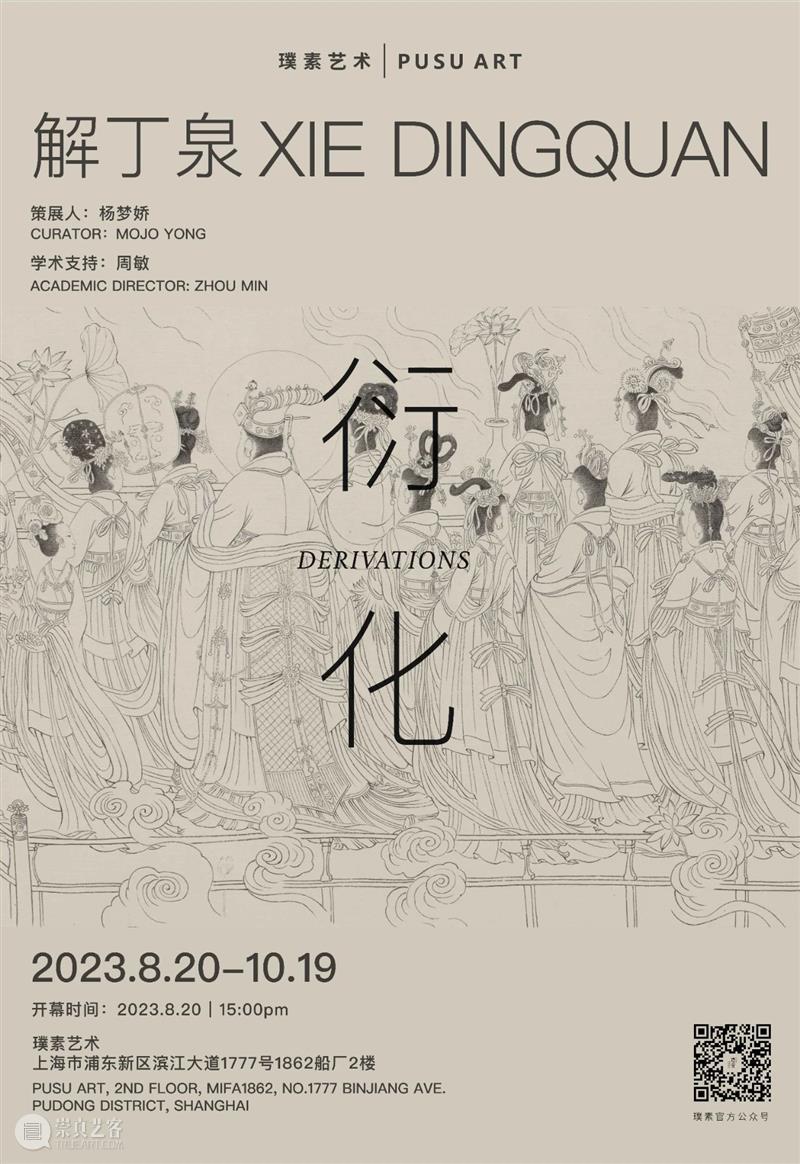
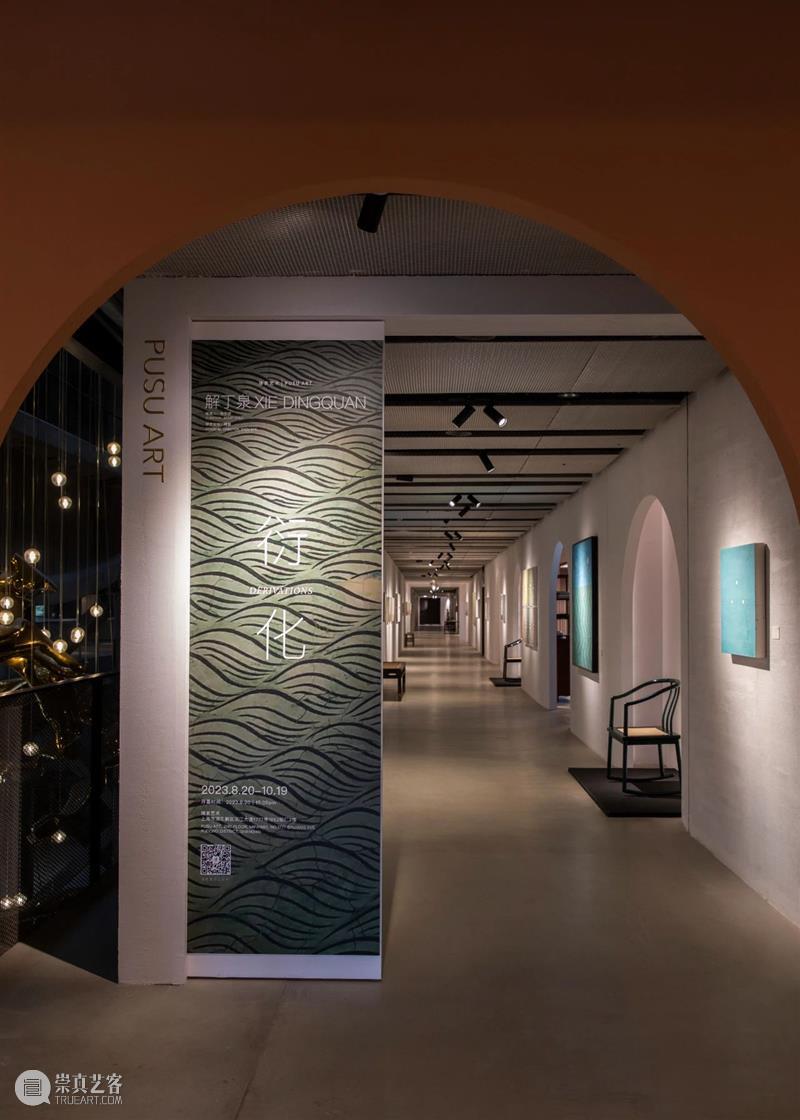
艺术家自述
我出生在河北的大平原上,从小在胡同里玩耍长大。大家没事的时候,就喜欢在墙壁上画画,一画就是一天。可能是跟墙壁有特殊的缘分,2005年我考入中央美术学院,经过一年的造型基础部的学习后,进入了壁画系。经过壁画系的五年学习,中国传统壁画在我内心种下了一个种子。
社会是另外一所大学,社会能量场的各种冲突也影响着我的思考。在众多社会问题中,信仰问题一直是我关心的重点,我开始思考自身和社会之间的关系,以及传统文化和当代文化之间是否有结合的可能性。伴随着这样的问题,我做了一系列的尝试,试着去反思我们这个时代如何面对传统和信仰的问题。我想表达当下与传统之间的距离感,用传统的方法去完成一件不传统的作品。
随着时间的推移,我在研究古代绘画的同时,同古人作品的交流,让我慢慢清晰了自己创作的方向,找到一个合适的坐标点。和古人对话,是给当下的人们一个通道,或者像是一个禅机。
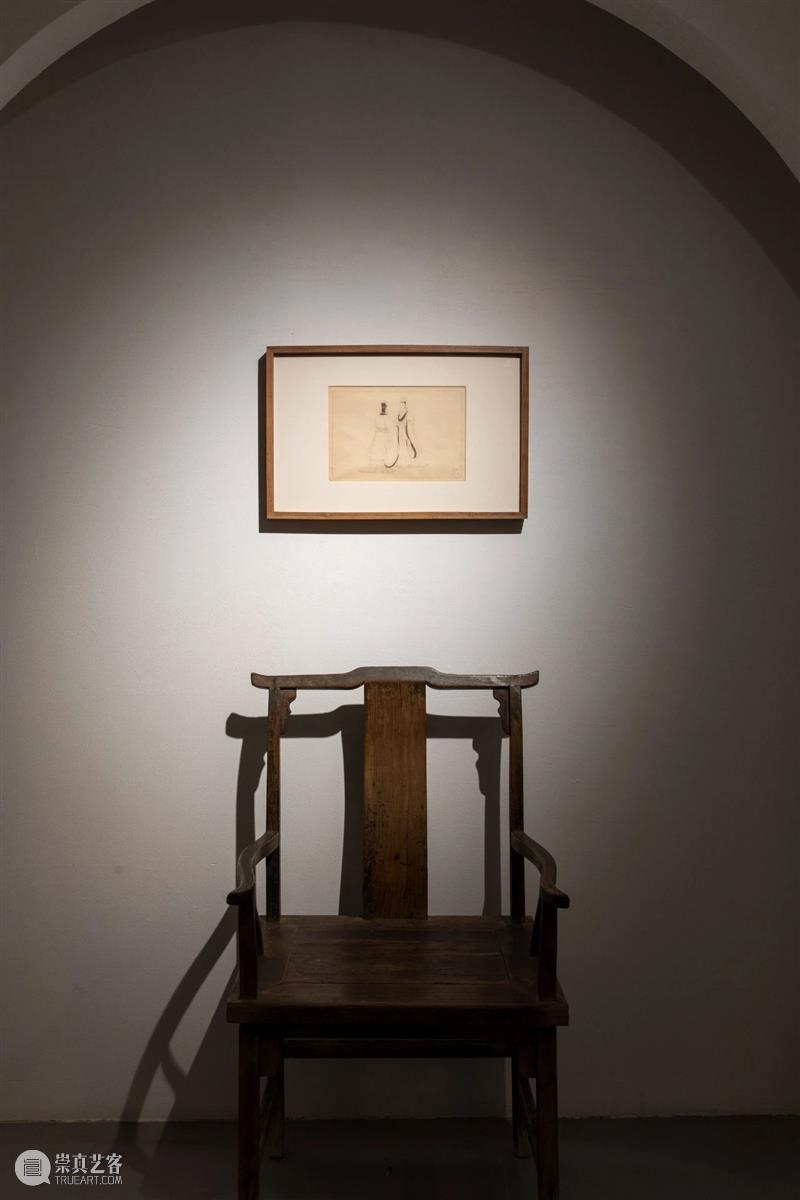
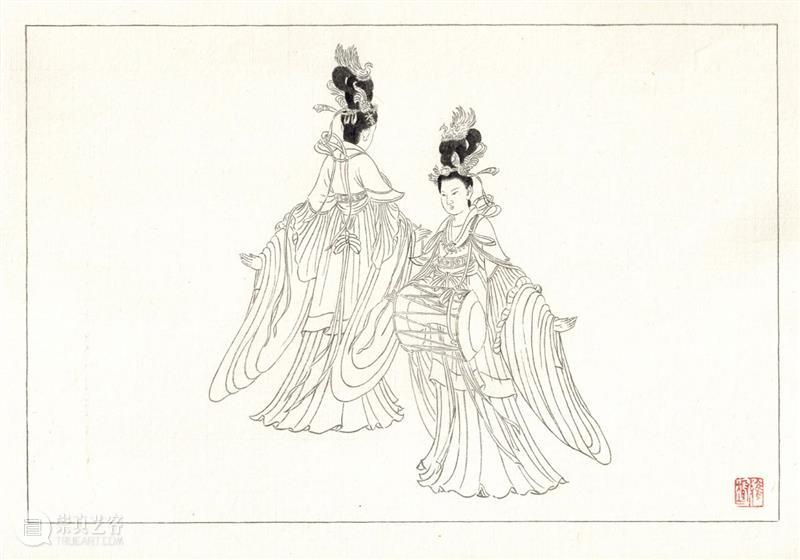

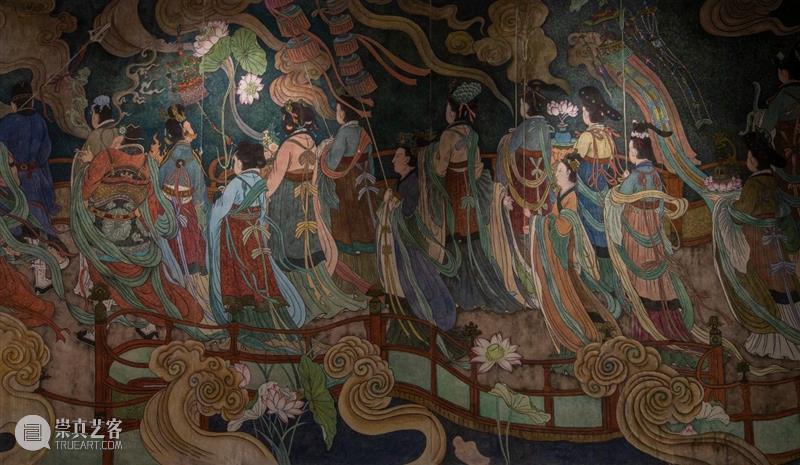
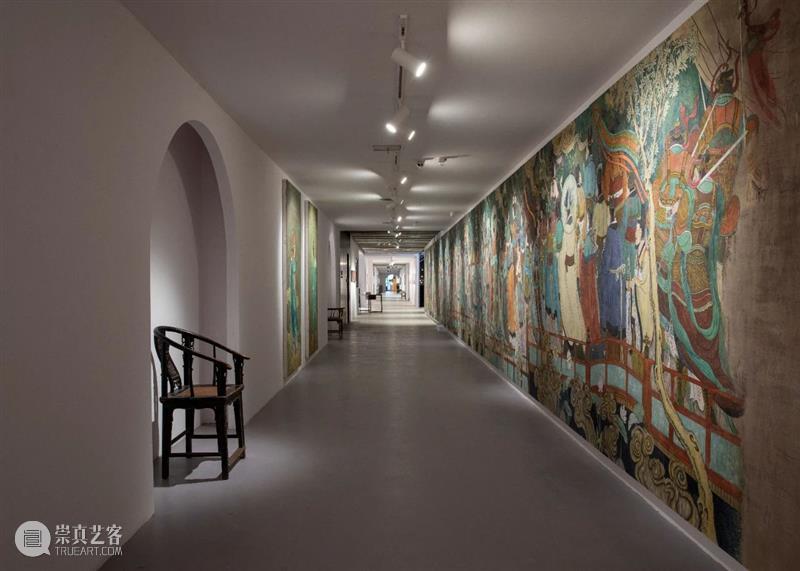
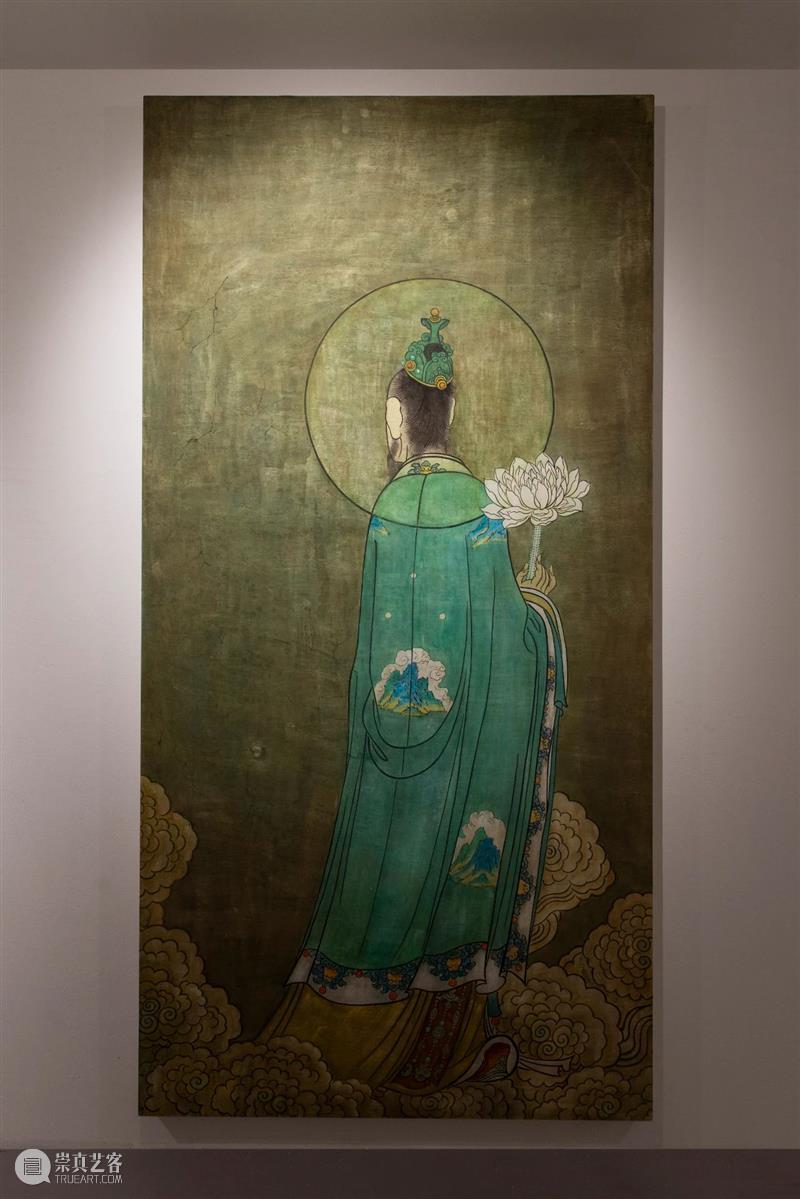
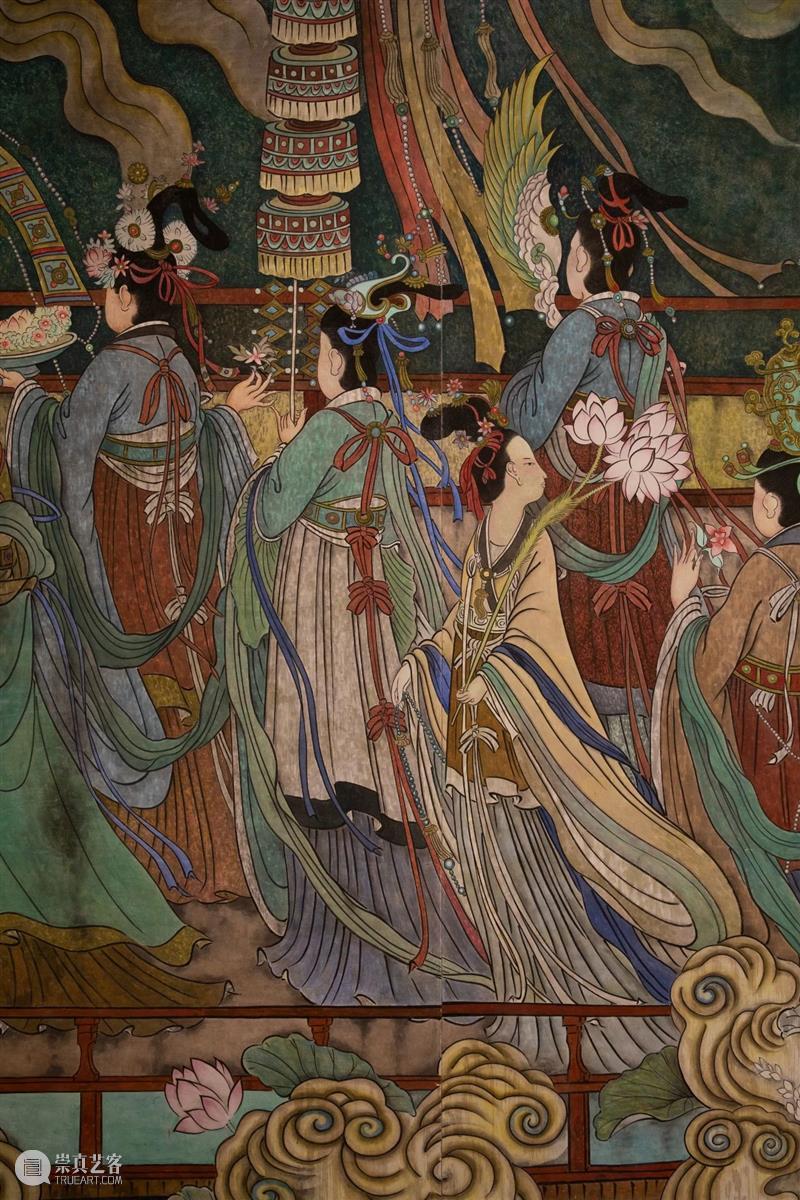
《彼岸图》局部,2015-2018
I was born in the great plain of Hebei Province in China and grew up playing in the Hutong. When I was free, I liked to paint on the wall, and I could draw all day. Maybe it's a special relationship with the wall. In 2005, I was admitted into the Central Academy of fine arts. After one year's study in the basic modeling de- partment, I entered the mural department, and began to study and live in the Academy for several years. In the mural department, I stayed for five years, and Chinese traditional murals planted a seed in my heart.
Society is another university. The conflicts of social energy field also affect my thoughts . In many social problems, belief has always been the focus of my concern. I began to think about the relationships between myself and society and whether there is a possibility of combination between traditional culture and contemporary culture. With such problems, I have made a series of attempts to reflect on how our times face the problems of tradition and belief. I want to express the sense of distance between the present and the tradition, and use traditional methods to complete an unconventional work.
As time goes on, while studying ancient paintings, the communication with the ancient works made me gradually clear the direction of how I should do it. To find a proper coordinate point and talk with the ancients is to give people a channel, or like a buddhist allegorical word or gesture.
One night in 2013, I sat at my desk and browse a bunch of picture albums. I found the Eighty-seven Immortal scroll painting collected by Mr. Xu Beihong. At that moment, I felt that I had found the direction of my work. The classicality and content of this work are in line with the creation noumenon I am looking for. Coordinate point and distance, these concepts are synthesize together, how to find the best angle to express this sense of distance has become new my problem.
Close in image, unfamiliar in schema. In the end, I borrowed the way of invert the image, that is, inverting all the images 180 degrees, and finally combining them to form a collective back schema picture to express the distance. The familiar and unfamiliar feeling on the image is what I want to express. Eighty-seven immortals are just on a fairy bridge. The front and back of the image seem to be like one side here and the other in space. Eighty-seven immortal scroll painting is on this side, and what I created became the other side.
With this creative idea, I began to prepare. I realized that there was a huge amount of work in it. I didn't start in a hurry. I was going to find some inspiration in the classical murals left in ancient times.
In the summer of 2013, when I went to Dunhuang, the desolation of the Gobi Desert immediately brought you into the poetic realm written by Ma Zhiyuan and the state of the desert martial arts of Jin Yong. In the desert, when walking, the temperature of the sun is doubled, there is not much strength under the feet, the clouds are very high, but the sun is very low, a sense of inexplicable sadness will rise naturally. It's hard to imagine the bustling atmosphere here for centuries from the northern and Southern Dynasties. When you enter the cave of fresco, you will understand what a prosperous scene it used to be.
The power of faith has transformed this place from a cave to hundreds of caves. Thousands of years later, it is also the light of faith that makes it a holy place for artists. The religious belief made Dunhuang success. These murals also made belief and art become one.
While copying the Eighty-seven Immortal scroll painting collected by Mr. Xu Beihong, I conceived the creation of the other shore. Dunhuang's silence also gave me a chance to be quiet. People always need to understand that art is a kind of faith and the state of mind is very important.
Faith in this era, more and more desalination. It's rarely mentioned or valued. Freedom of belief is the best reason and also the best escape. Although everyone seems to have their own goals, but the spiritual loneliness, has become the epitome of this era.
This time I watched the Dunhuang murals, it was like a mobilization meeting for my own thoughts. I understand that it's a big project to combine the proximity of this image, the reversal of the schema, and finally became a new image.
What I saw in Dunhuang gave me this spiritual strength.
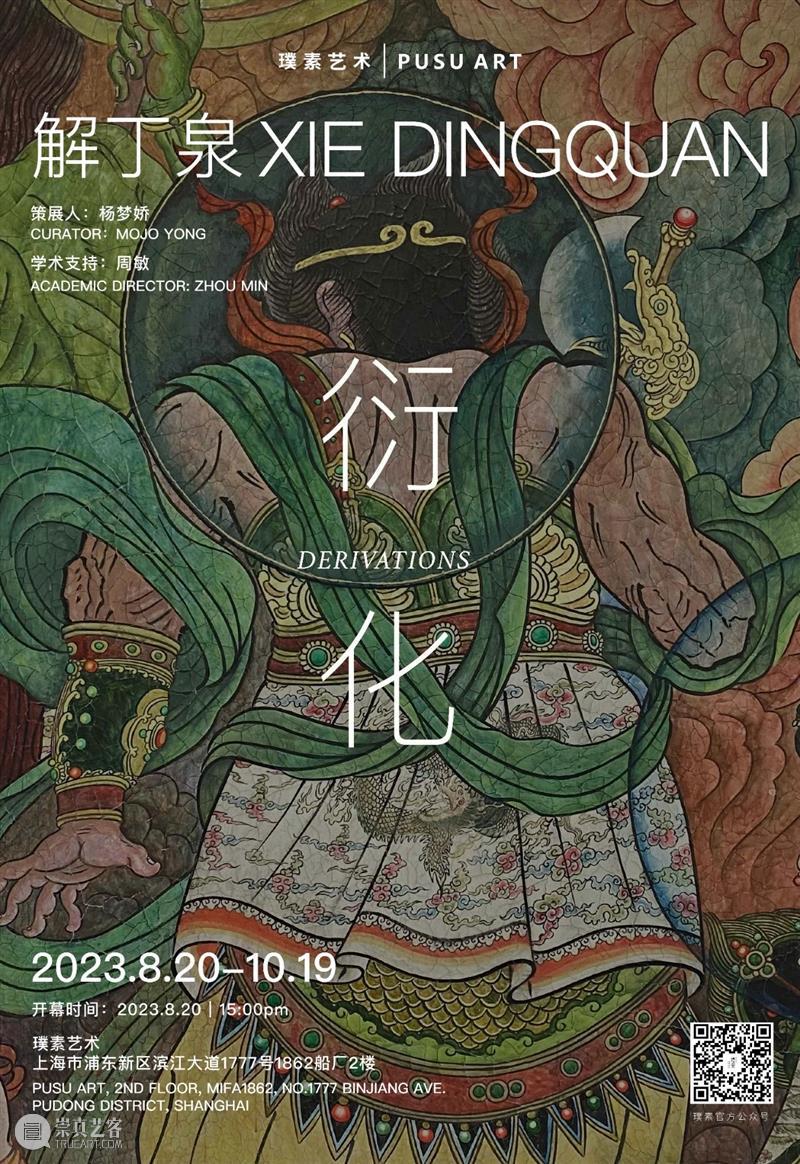
三个关键词
理解作品
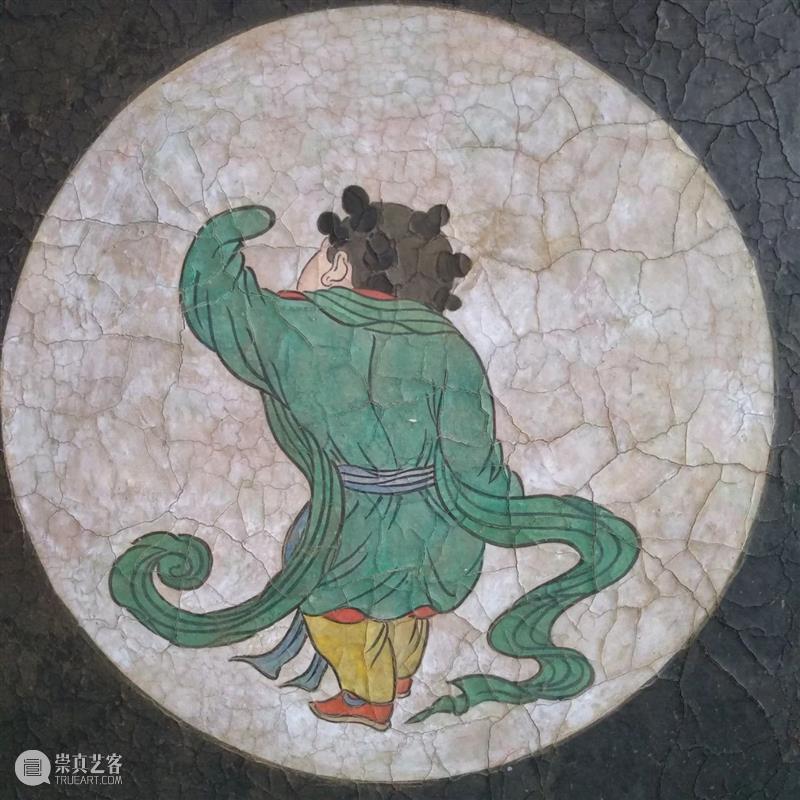
信仰并不局限于宗教,它大于宗教,或者说宗教只是信仰的一种,信仰还可以包括爱、美、善、正义、公平、自由、真诚等价值。在传统社会,人们的信仰大多是依赖于宗教。当尼采喊出“上帝死了”,神圣的宗教时代已经无可救药地让位于祛魅的世俗时代了。人们的信仰该何去何从?人们又该如何安顿自己的生命?
解丁泉不是像一个哲学家那样止步于从概念到观念的玄谈辩论,也不是像一个政治家一样给出某种确定的解决方案,而是作为一个艺术家,保有一个艺术家的动手能力和创作热情,试图呈现这样一个问题境域,通过艺术的方式打开这样一个反思的“场地”或“通道”,将观众带入其中。
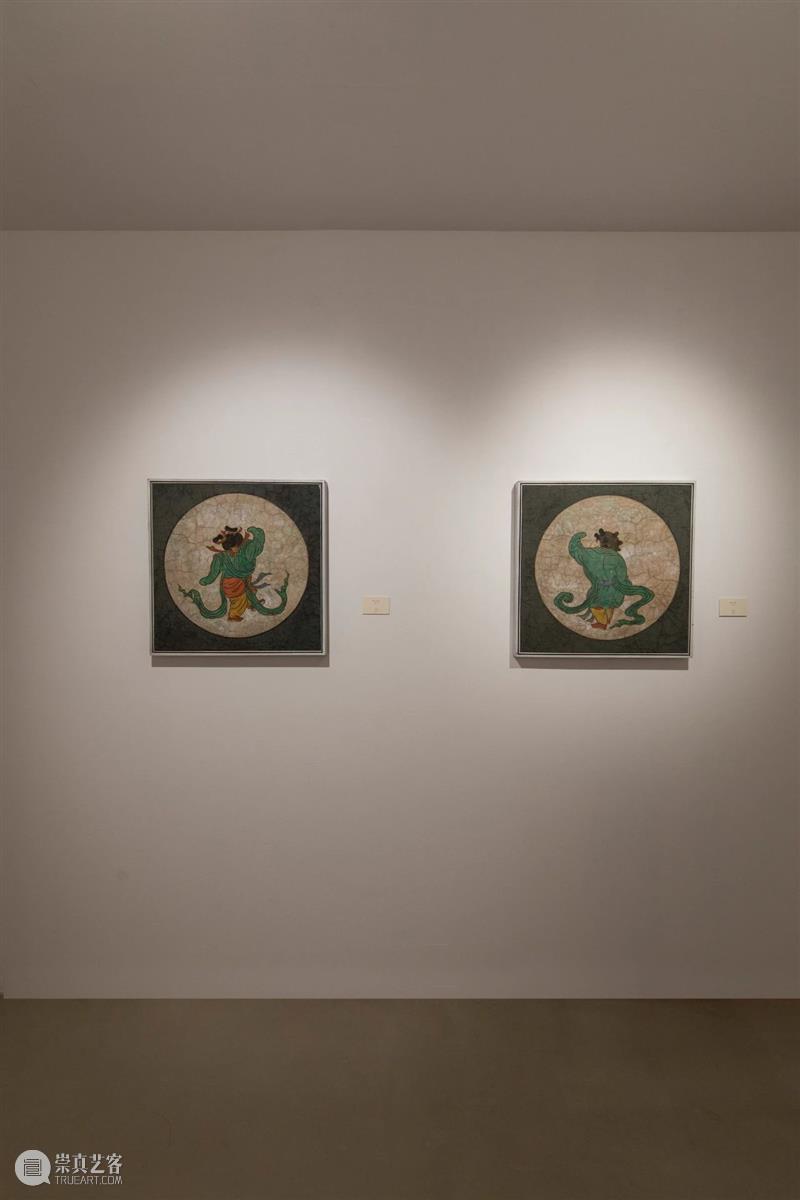
如果只是从意图上说,能达到反思信仰目的的方式可以有很多种,尤其在当代艺术中,完全可以用装置、拼贴、甚至现成品等不需要太多技术的方式进行。如杜尚用一个日常用品“小便池”就达到他反思艺术体制的意图。这类当代艺术如同一个脑筋急转弯的游戏,在人们得知答案(观念意图)之后,这个游戏本身,便毫无可观,甚至让人感觉到一种玩世式的狡黠。
显然,解丁泉没有采取这种抖机灵式的取巧,而是选择了一种非常传统的方式。此处的“传统”可以从内容和形式两个方面来理解。
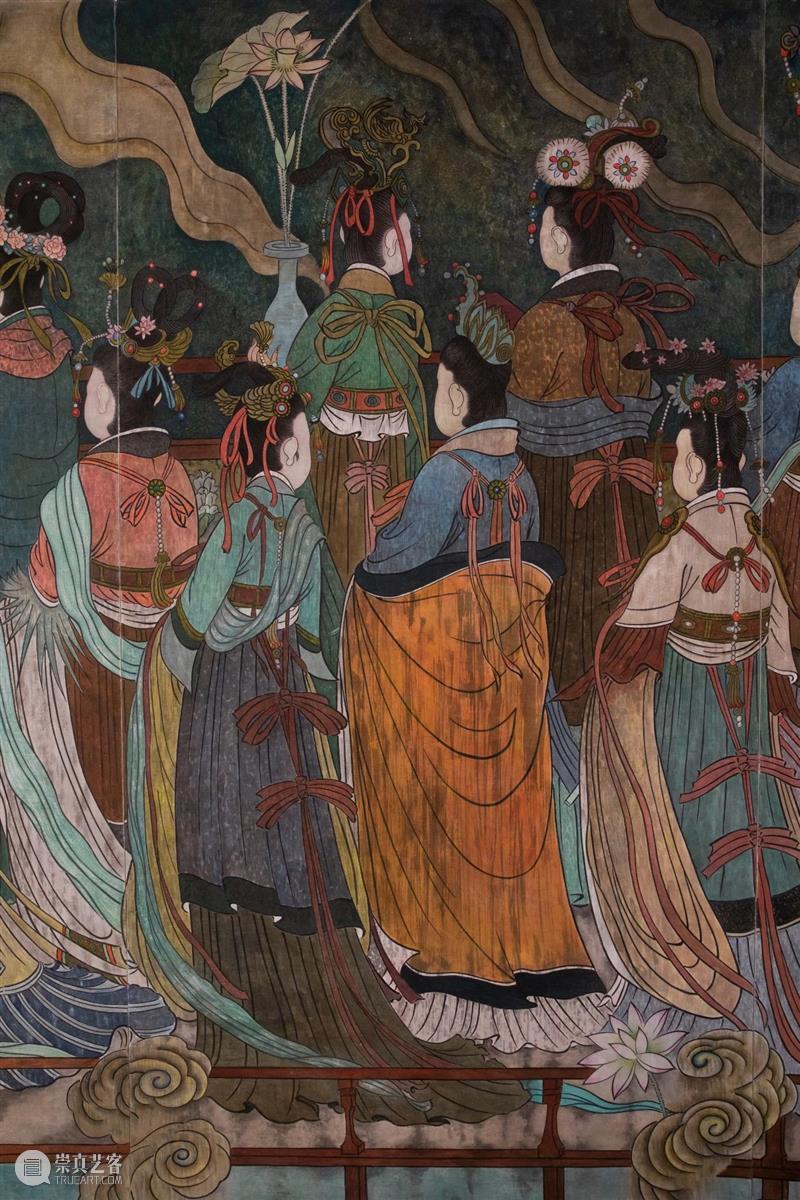
就内容而言,儒释道是中国古代社会的信仰核心,这是一个足够厚重、绵长的传统,所以艺术家说:“不是我选择儒释道,是我被选择的”;就形式而言,他选择了传统的绘画方式,起稿、勾线、调色、上彩等,这是一个费力费时且需要专业技法的工作。从2013年到2015年,三年的时间才终于完成《彼岸图》,而这还只是一个开始,之后还有《孔子行教图》,以及一直做到现在的《药师经变图》。
解丁泉同样用如此传统的方式、耗费如此漫长精力去制作如此大体量的系列作品,这带给人的冲击力度不是一般装置所能达到的。坚持完成这样的工作,其本身就需要一种信仰,如他所说的“人总是需要明白,艺术是一种信仰。”
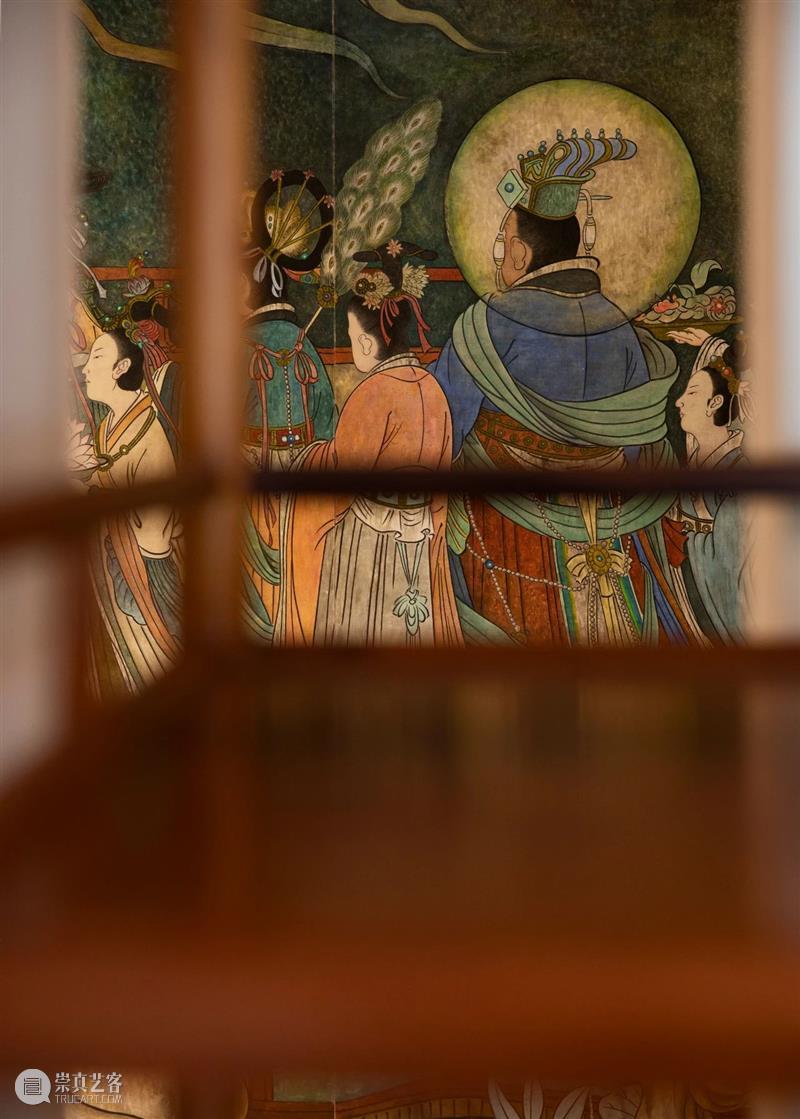
背反
信仰、传统,依然还是古典绘画范畴内的元素,如果丁泉局限于此那其作品还只是传统意义上的古典绘画。而从古典到当代的跳跃,解丁泉只用了一个非常巧妙的方式——背反。
从图像语意上说,画面内容是关于传统与信仰的背反,它强烈地指向一个问题,让观众不由自主地会去思考,到底谁在背反什么?“是信仰背离了我们还是我们背离了信仰?”
当我们不自觉开始反思自身的时候,我们实际上就与自己拉开了一段距离,这一“反思”行为如同在我们处身其间的当下社会、文化语境中开辟出一块“林中空地”,将“我”和当下隔开,让“我”得以静观、沉思自身的生存境域。这一时刻就是艺术作品之当代性的发生时刻。
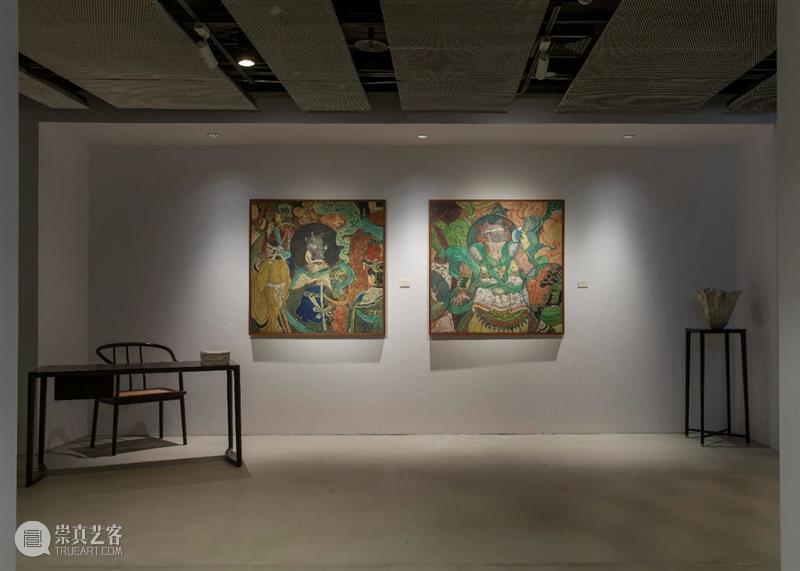
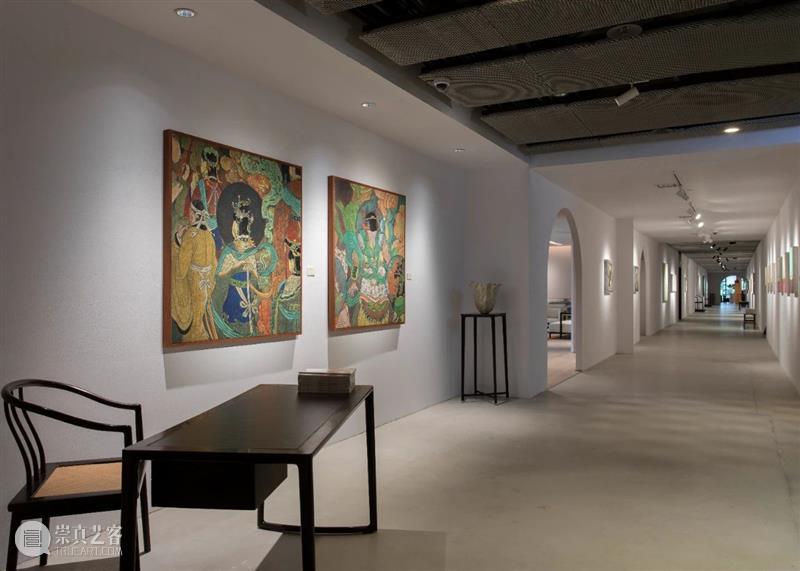
以当代艺术作品的标准来看,解丁泉的作品又颇不当代。当代艺术作品通常体现在三个方面:思想、观念的当代性,媒介、手法与展示的当代性以及形式语言的当代性。这三个方面紧密相关、互动,但最后的落脚点则通常聚集到形式语言上。
而解丁泉的作品不同之处在于,他的落脚点更多聚焦在思想与观念上,他将思想置入图像,将观念落实到画面上,在图像语意上制造一种悖论,以此呈现出认识上的张力,将观众强力“吸入”其中。
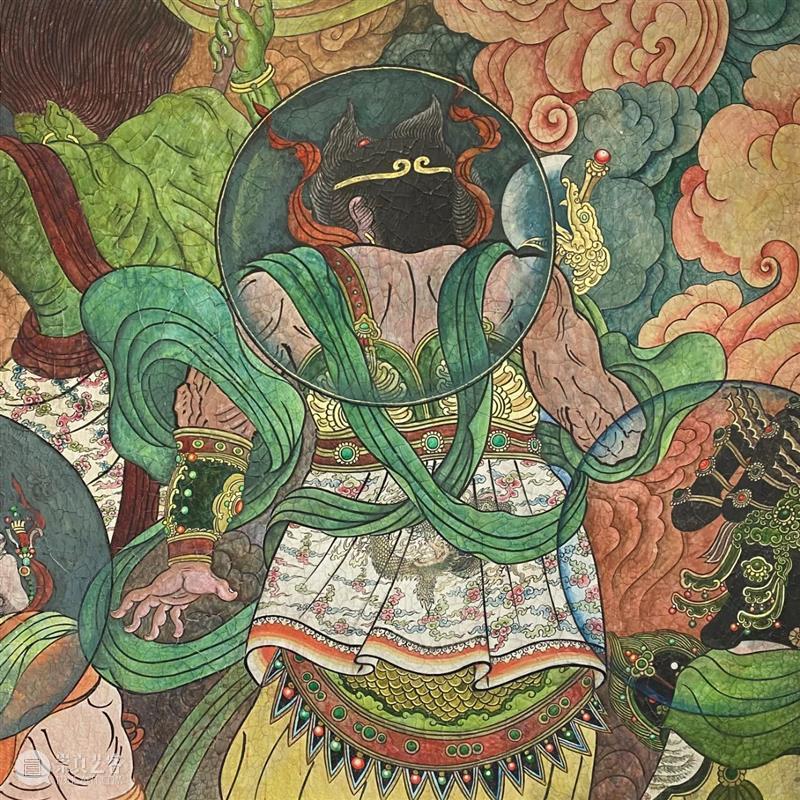
在展示方式上,《彼岸图》还原了《八十七神仙卷》粉本和壁画形式。在形式语言上,更是紧贴传统壁画的创作方式,用木板或画布先绷出墙面,刷上一层白浆,等它自然干裂以模拟出壁画的龟裂形态,勾线、填色等也全是传统的样式。这种做法当然得益于丁泉科班出身的专业背景,但却在一定程度上,解构了当代艺术的刻板印象,这无疑是又一个“背反”。
解丁泉的“背反”系列作品,就如同一声呼唤,以温柔、隽永的方式,呼唤观众“反身而诚”,真诚地凝视自身,求其放逐之心,以此重建对生活本身的信仰。
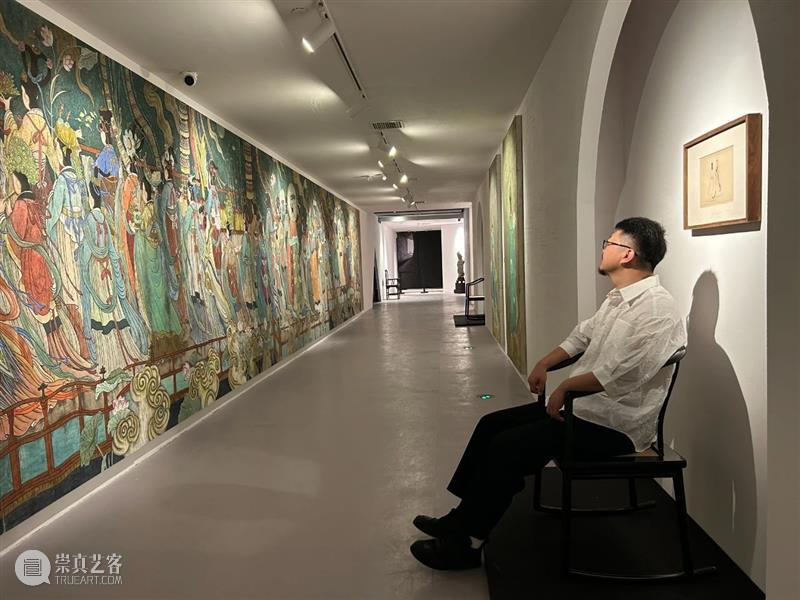
3 KEY WORDS
FAITH
When asked why he created the work The Other Shore, Xie Dingquan replied that it was a reflection on contemporary social belief issues, as well as a tribute to tradition.
Belief is not limited to religion. It is larger than religion, or religion is just one form of belief. Belief can also include values such as love, beauty, goodness, justice, fairness, freedom, and sincerity. In traditional society, people's beliefs are mostly based on religion. When Nietzsche shouted, "God is dead," the sacred religious era had already irreversibly given way to the secular era of exorcism. Where should people's beliefs go? How should people settle their lives?
Quan is not like a philosopher who stops at the level of conceptual debate, nor is he like a politician who provides a specific solution. Instead, as an artist, he maintains the ability and enthusiasm of an artist to create, attempting to present such a problem domain and open a reflective "place" or "channel" through artistic means to bring the audience into it.
TRADITION
If we only look at the intention, there can be many ways to achieve the purpose of reflecting on faith, especially in contemporary art, which can be done using installations, collages, or even ready-made objects that do not require too much technical skill. For example, Duchamp achieved his intention of reflecting on the art system by using a daily use item, a urinal. This type of contemporary art is like a brain teaser game, which loses its appeal once people know the answer (the conceptual intention), and even feels like a cynical trickery.
Obviously, Ding Quan did not choose this kind of clever shortcut, but chose a very traditional method. The term Traditional can be understood from both the content and form aspects.
In terms of content, Confucianism, Buddhism, and Taoism were the core beliefs of ancient Chinese society, which is a sufficiently profound and long-standing tradition, so Ding Quan said, "It was not me who chose Confucianism, Buddhism, and Taoism, it was me who was chosen."
In terms of form, he chose traditional painting techniques, such as sketching, outlining, coloring, and layering, which is a laborious and time-consuming process that requires professional skills. It took him three years from 2013 to 2015 to complete The Other Shore and this was only the beginning. He also created Confucius Teaching and Pharmaceutical Sutra Variation up to the present.
Ding Quan also used such a traditional method and spent such a long time and energy to create such a large volume of work, which is more impactful than any installation can achieve. To persist in completing such work requires a kind of faith, as he said, "People always need to understand that art is a kind of faith."
BACKWARD
Faith and tradition are still elements within the category of classical painting. If Ding Quan were limited to these elements, his works would only be classical paintings in the traditional sense. However, Ding Quan made a very clever jump from classical to contemporary art by using the element of Backward.
From the perspective of image semantics, the content of the painting is a backward between tradition and faith, which strongly points to a question that makes the audience involuntarily think, who is backward to whom? " Did our faith deviate from us or did we deviate from our faith? "
When we unconsciously begin to reflect on ourselves, we actually drew back distance with ourselves, opening up a Forest Clearing in the current social and cultural context, allowing Me to observe and contemplate our own living environment. This is the moment of the occurrence of contemporary art.
From the perspective of contemporary art, Ding Quan's works are not quite contemporary. Contemporary art is usually characterized by three aspects: the contemporary nature of ideas and concepts, the contemporary nature of media, techniques and presentation, and the contemporary nature of formal language. These three aspects are closely related and interactive, but the final focus is usually on formal language.
However, Ding Quan's works are different in that his focus is more on ideas and concepts, while the other two aspects are very traditional. He puts his ideas into images, and translates concepts into visual elements, creating a paradoxical meaning in the image, presenting a tension in knowledge, and drawing the audience strongly into it.
In terms of presentation, The Other Shore restores the format of the fan version and mural of The Eighty-Seven Immortals. In terms of formal language, he closely follows the traditional style of mural creation, using wooden boards or canvases to simulate the cracked form of murals by brushing on a layer of white plaster and waiting for it to naturally crack before outlining and coloring, all in traditional style. This approach is due to Ding Quan's professional background, but to some extent it deconstructs the stereotype of contemporary art, which is undoubtedly another Backward.
Ding Quan's Backward series of works, like a call, gently and elegantly calls on the audience to "turn back and be sincere," to honestly look at themselves, to seek their exiled hearts, and thus to rebuild their belief in life.
关于艺术家
About the Artist
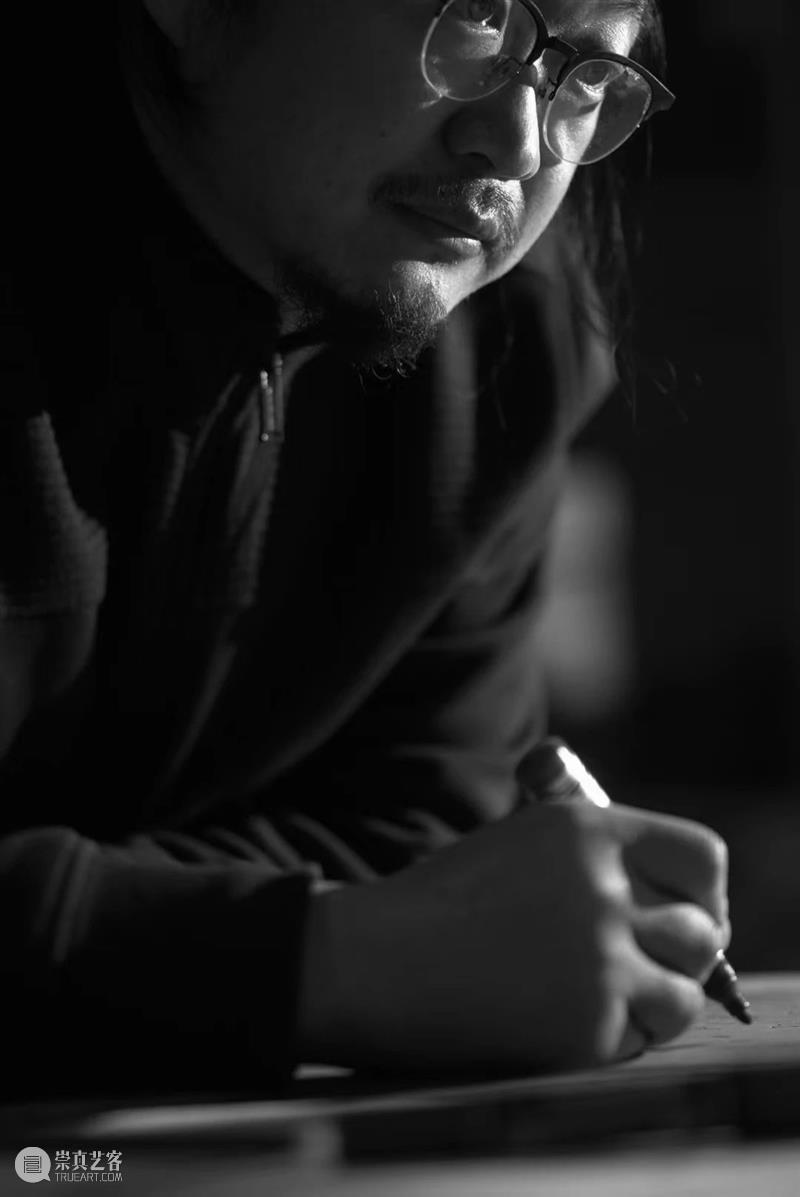
解丁泉
XIE DINGQUAN
2005-2010 中央美术学院 本科
2012-2015 中央美术学院 硕士
2015-2016 受聘于湖北美术学院
2019-2020 康奈尔大学访问学者
2016-至今 任教于江西师范大学
Central Academy of Fine Arts, B.A. 2005-2010
Central Academy of Fine Arts, MFA 2012-2015
Employed by Hubei Institute of Fine Arts 2015-2016
Visiting Scholar at Cornell University 2019-2020
Teaching at Jiangxi Normal University 2016-now
预约观展及咨询更多展品信息
请私信客服

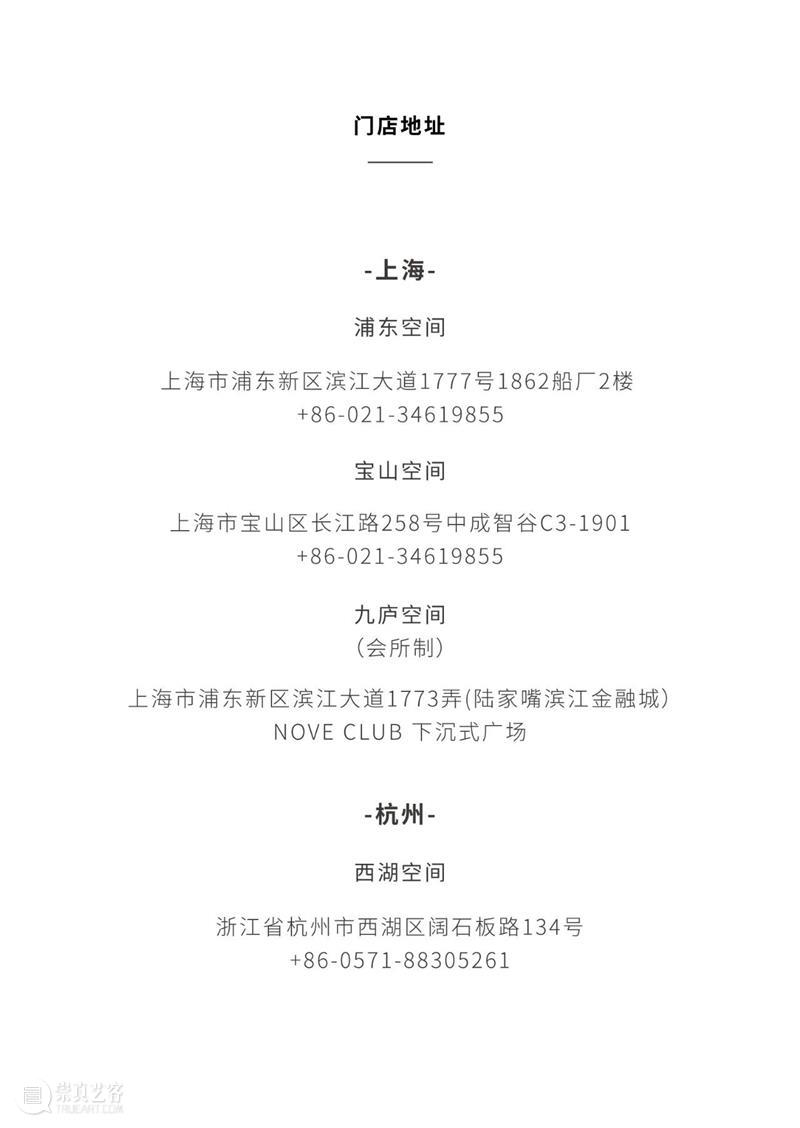


已展示全部
更多功能等你开启...





 分享
分享